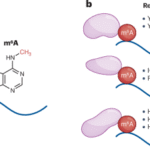In the quiet town of Lier, Belgium, Werner van Beethoven proudly displays a family tree on the wall of his living room. Its branches span 13 generations, tracing the lineage of the van Beethoven family, including its most famous member: Ludwig van Beethoven, the legendary composer who reshaped Western music with masterpieces like the Fifth Symphony and Für Elise. Yet, in 2023, Werner received shocking news that upended his understanding of his family’s history. Genetic testing revealed that Ludwig van Beethoven, born in 1770, was not biologically related to Werner or other living van Beethovens1. This discovery, made by Belgian geneticist Maarten Larmuseau, highlights the power of modern science to uncover long-buried family secrets—and challenges our assumptions about kinship, legacy, and history.
In 2023,Genetic testing revealed that Ludwig van Beethoven, born in 1770, was not biologically related to Werner or other living van Beethovens
Begg et al. (2023)

The Science of Extra-Pair Paternity
The revelation about Beethoven’s paternity is part of a broader scientific exploration into extra-pair paternity (EPP), a term used to describe cases where a child’s biological father is not the mother’s partner. EPP can result from infidelity, sexual coercion, or other circumstances, and it has been a source of cultural anxiety for centuries. From Greek dramas to Shakespearean plays, the fear of hidden paternity has long captivated the human imagination.
Maarten Larmuseau, a geneticist at KU Leuven, has dedicated his career to studying EPP. By combining genealogical records with DNA testing, he has developed a method to identify instances of misattributed paternity dating back hundreds of years. His research has made him a pioneer in the field of genetic genealogy, providing insights into how often EPP occurs and how it has shaped family histories.
Beethoven’s Biological Mystery
Larmuseau’s investigation into the van Beethoven family began as an effort to authenticate locks of hair believed to belong to Ludwig van Beethoven. By comparing the Y chromosomes of living van Beethovens to those of the composer, researchers hoped to confirm the hair’s provenance. However,
The results revealed a startling twist: Ludwig van Beethoven’s Y chromosome did not match that of his modern-day relatives.
This meant that, at some point in the generations before Ludwig’s birth, an extra-pair paternity event had occurred. For Werner van Beethoven, the news was initially devastating. “I’m pretty proud of my family name,” he said. “That’s why I was disappointed the composer wasn’t a real van Beethoven biologically.” Yet, over time, Werner came to terms with the discovery, recognizing that family identity is about more than just biology. “After a while, I thought, maybe he’s not a real Beethoven biologically, but legally he’s got the same name, and I’m proud of it,” he reflected. “There are illegitimate kids in every family. There’s no shame in it.”
How Common Is Extra-Pair Paternity?
Larmuseau’s research has broader implications beyond the van Beethoven family. For decades, a widely cited but unsubstantiated statistic suggested that 10% of children were fathered by someone other than their mother’s partner2. Larmuseau’s work, however, paints a different picture. By analyzing the Y chromosomes of hundreds of men in Belgium and the Netherlands, he found that the rate of EPP in Europe over the past 500 years is closer to 1%.
This low rate challenges the cultural obsession with paternity and the fear of cuckoldry that has permeated European art and literature for centuries. “One message is everybody stop panicking,” Larmuseau says, “because it’s not the problem you think it is.”
Global Perspectives on Paternity
While EPP rates are low in Europe, they vary significantly across cultures. Among the Himba people of Namibia, for example, nearly half of children are fathered by men other than their mothers’ partners. Yet, in Himba society, social fathers still consider themselves the legal and emotional fathers of all their wives’ children. This contrasts sharply with the stigma surrounding female infidelity in many Western societies.
Similarly, in some South American tribes, such as the Yanomami, multiple men can contribute to a child’s paternity through sexual relations with the mother. These examples highlight the diversity of human family structures and challenge the notion that biological paternity is universally paramount.
The Emotional Toll of Genetic Discoveries
Larmuseau’s research offers valuable insights into human history, but it also raises complex ethical and emotional challenges. As direct-to-consumer DNA testing has become more widespread, millions of people have uncovered unexpected truths about their ancestry—sometimes learning that their biological father is not who they thought. Such revelations can be deeply unsettling, triggering feelings of betrayal, confusion, and distress, particularly when they come without any prior warning or psychological support.
To minimize harm, Larmuseau takes a cautious approach, refraining from testing close relatives and ensuring that those affected by his findings have access to counseling. His work, while academically significant, has also led to strong emotional reactions. “Some people respond with anger, disgust, or frustration toward Maarten,” says genealogist Jan Geypen, who collaborates with him. “But the past is what it is, and sometimes, confronting it is the only way forward.”
A New Understanding of Family
The discovery that Ludwig van Beethoven was not biologically related to his namesake family underscores the complexity of human relationships and the fluidity of family identity. While biology plays a role in kinship, it is not the sole determinant. Adoption, stepfamilies, and social bonds also shape our understanding of family.
For Werner van Beethoven, the revelation has deepened his appreciation for his family’s history. He has continued to explore his genealogy, uncovering stories of resilience and strength, such as that of Josijne van Vlasselaer, a relative burned as a witch in 1595. “She was a strong woman,” Werner says, “with special ideas.”
What’s next…
Maarten Larmuseau’s research into extra-pair paternity has transformed our understanding of family history, revealing both the rarity of EPP in Europe and the diversity of human kinship structures worldwide. The discovery about Ludwig van Beethoven’s paternity is a reminder that our ancestors’ lives were often more complex than we imagine—and that family identity is about more than just biology. As science continues to uncover the secrets of the past, it invites us to reflect on what truly connects us to our ancestors and to each other.
- Begg, T. J. A., Schmidt, A., Kocher, A., Larmuseau, M. H., Runfeldt, G., Maier, P. A., . . . Krause, J. (2023). Genomic analyses of hair from Ludwig van Beethoven. Current Biology, 33(8), 1431-1447.e22. https://doi.org/10.1016/j.cub.2023.02.041 ↩︎
- Anderson, K. G. (2006). How well does paternity confidence match actual paternity? Current Anthropology, 47(3), 513–520. https://doi.org/10.1086/504167 ↩︎











